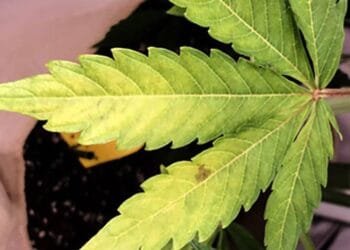Introduction
Plant Growth Regulators (PGRs) are chemicals used to influence the growth and development of plants. While they are common in agriculture and horticulture, their use in cannabis cultivation has sparked controversy. This article delves into what PGRs are, their types, uses in cannabis cultivation, potential risks, and how to identify PGR-treated cannabis.
What Are Plant Growth Regulators?
PGRs are substances that regulate plant growth by altering their hormonal balance. They can either accelerate or inhibit growth, depending on their type and application. PGRs fall into two broad categories:
- Natural PGRs: These include hormones like auxins, cytokinins, gibberellins, ethylene, and abscisic acid, which occur naturally in plants.
2. Synthetic PGRs: These are artificially produced chemicals designed to mimic or inhibit the action of natural hormones.
Uses of PGRs in Cannabis Cultivation
In cannabis cultivation, PGRs are used for several purposes:
– Control Plant Size: PGRs can keep plants shorter and more manageable, which is particularly useful for indoor grows.
– **Enhance Yield:** They can increase bud density and overall yield by promoting more robust flowering.
– **Improve Aesthetics:** PGRs can lead to more uniform and visually appealing buds.
Common PGRs Used in Cannabis
1. Paclobutrazol: This PGR inhibits gibberellin biosynthesis, leading to shorter and denser plants. However, it can also reduce THC levels and potentially leave harmful residues.
2. Daminozide (Alar): Often used to increase flower density, daminozide is controversial due to its potential health risks when consumed.
3. Chlormequat Chloride: Used to reduce plant height and encourage robust growth, this PGR can have adverse health effects if not properly managed.
Potential Risks of PGRs
– Health Risks: Some synthetic PGRs are classified as potential carcinogens. Residual chemicals can pose health risks to consumers.
– Reduced Potency: PGRs can lower the THC content, diminishing the psychoactive and therapeutic effects of cannabis.
– Environmental Impact: PGRs can contaminate soil and water sources, negatively affecting the environment.
Identifying PGR-Treated Cannabis
1. Appearance: PGR-treated buds are often unnaturally dense, hard, and heavy. They may also have an unusually uniform shape and size.
2. Color: The buds might appear darker or more muted compared to non-treated cannabis.
3. Texture: PGR-treated buds are typically harder and less sticky due to lower resin production.
4. Smell: There may be a noticeable lack of the pungent aroma that characterizes high-quality cannabis.
5. Taste: The flavor of PGR-treated cannabis can be harsher and less pleasant.
Natural Alternatives and Cultivation Methods
For those looking to avoid synthetic PGRs, there are effective natural alternatives and methods to achieve desirable results in cannabis cultivation:
1. Training Techniques: Methods such as topping, fimming, and low-stress training (LST) can control plant height and improve yields without chemicals.
2. Organic Supplements: Natural supplements like kelp extract, humic acids, and compost teas can promote healthy growth and robust flowering.
3. Environmental Control: Proper management of light, temperature, and humidity can optimize plant growth and development.
Regulations and Consumer Awareness
The use of PGRs in cannabis cultivation is regulated differently across regions. It’s important for cultivators to stay informed about local regulations to ensure compliance. Educating consumers about the potential risks of PGR-treated cannabis helps them make informed choices. Awareness campaigns and clear labeling can assist consumers in identifying and avoiding products treated with harmful chemicals.
Conclusion
While PGRs can offer some advantages in cannabis cultivation, their potential health risks and impact on quality make them a controversial choice. As a consumer, being able to identify PGR-treated cannabis is crucial for making informed decisions. For cultivators, focusing on natural growth methods can ensure the production of safer, higher-quality cannabis. Always prioritize the health and safety of consumers by opting for organic and sustainable cultivation practices whenever possible.
Read More Articles








